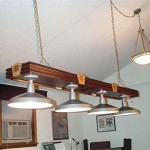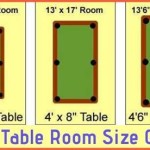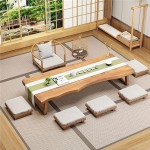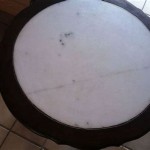Table Flower Arrangements: Elevating Wedding Reception Aesthetics
Table flower arrangements are an integral component of wedding reception décor, contributing significantly to the overall ambiance and aesthetic appeal. They serve as focal points, drawing the eye and establishing a cohesive visual theme that complements the couple's style and wedding vision. Careful consideration of flower types, colors, sizes, and arrangement styles is crucial to creating a memorable and personalized experience for both the wedding party and guests.
The selection process for table flower arrangements should begin well in advance of the wedding date, allowing ample time for consultation with florists, exploration of various design options, and procurement of necessary materials. Budgetary constraints, venue characteristics, and seasonal availability of specific flowers are important factors to consider. An informed approach ensures that the final arrangements are not only visually stunning but also practical and cost-effective.
Key Considerations in Selecting Table Flower Arrangements
Several crucial factors influence the selection and design of table flower arrangements for a wedding reception. These factors extend beyond mere aesthetic preferences, encompassing practical considerations related to venue logistics, guest comfort, and overall event flow.
1. Venue Aesthetics and Theme: The existing décor and architectural style of the reception venue play a significant role in determining the appropriate style of table flower arrangements. A rustic barn setting might call for more natural and organic arrangements using wildflowers and greenery, while a grand ballroom could accommodate more elaborate and formal designs incorporating classic flowers like roses and hydrangeas. The color palette employed in the venue's decor should also be considered, ensuring that the flower arrangements complement and enhance the existing color scheme rather than clashing with it.
The overall wedding theme further dictates the style and composition of the arrangements. A vintage-themed wedding might feature arrangements in antique vases with soft, muted colors, while a modern, minimalist wedding could opt for sleek, geometric arrangements with bold, contrasting colors. Consistency between the table flower arrangements and the overall wedding theme is paramount to creating a unified and harmonious visual experience.
2. Table Size and Shape: The dimensions and shape of the tables at the reception directly impact the size and style of the flower arrangements. Round tables generally accommodate centerpieces that are symmetrical and evenly distributed, while rectangular tables allow for more elongated and asymmetrical arrangements. The height of the arrangements is also critical. Tall arrangements can add drama and elegance, but they should not obstruct guests' views or hinder conversation across the table. Low arrangements are generally considered more conducive to interaction and are often preferred for creating a more intimate atmosphere.
Consider the number of guests seated at each table when determining the size and placement of the arrangements. Overcrowding the table with excessively large arrangements can make it difficult for guests to access food and drinks, while undersized arrangements might appear insignificant and fail to make a visual impact. Striking a balance between visual appeal and practicality is essential.
3. Flower Types and Colors: The selection of flower types and colors is a highly personal decision that reflects the couple's individual style and preferences. However, it is important to consider the symbolic meanings associated with different flowers and colors. Roses, for example, symbolize love and passion, while lilies represent purity and elegance. Certain flowers have strong fragrances that may be overwhelming to some guests, so it's crucial to choose varieties with subtle or no scent, especially for intimate settings.
The color palette of the flower arrangements should complement the overall wedding color scheme and the venue's décor. Neutral colors like white, cream, and green are versatile and can be easily incorporated into various settings. Bold colors like red, orange, and yellow can add vibrancy and energy to the reception, while pastel colors like pink, lavender, and blue create a more romantic and delicate atmosphere. The use of complementary colors or analogous colors can create visually stunning and harmonious arrangements.
Beyond aesthetics, consider the seasonality of different flowers. Choosing flowers that are in season not only ensures their availability but also often results in lower costs. A skilled florist can guide the couple in selecting seasonal flowers that align with their desired aesthetic and budget.
Styles and Types of Table Flower Arrangements
The range of styles and types of table flower arrangements is vast, offering endless possibilities for customization and personalization. Understanding the different options available can empower couples to make informed decisions that align with their aesthetic vision and practical considerations.
1. Centerpieces: Centerpieces are the most common type of table flower arrangement at wedding receptions. They are typically placed in the center of the table and serve as the primary focal point. Centerpieces can range in size and complexity, from simple bud vases with a few stems to elaborate arrangements with multiple floral elements and decorative accents.
Tall centerpieces are often used to create a sense of drama and elegance. These arrangements typically feature tall vases or pedestals that elevate the flowers above the table, allowing for unobstructed views and conversation. Low centerpieces, on the other hand, are more intimate and inviting, creating a closer connection between guests.
2. Floral Garlands: Floral garlands are long, flowing arrangements that can be draped across the center of the table or arranged along the sides. They are often used on rectangular tables to create a visually appealing and continuous floral element. Floral garlands can be composed of a variety of flowers, greenery, and decorative accents, and they can be customized to match the overall wedding theme and color scheme.
Garlands can be used alone as a simple, elegant table decoration, or they can be combined with other floral elements, such as candles or individual bud vases, to create a more layered and textured look. The density and fullness of the garland can also be adjusted to suit the specific style and aesthetic of the reception.
3. Individual Bud Vases: Individual bud vases are small, simple arrangements that feature a single flower or a few stems in a miniature vase. They are often used in clusters of varying heights to create a visually interesting and dynamic table setting. Bud vases are a versatile option that can be easily customized to match the overall wedding theme and color scheme.
They are also a cost-effective option for couples on a budget, as they require fewer flowers than larger, more elaborate arrangements. Bud vases can be arranged in a variety of ways, from symmetrical patterns to more free-flowing and organic compositions. They can be used alone or combined with other decorative elements, such as candles or scattered petals, to create a more complete and visually appealing table setting.
Practical Considerations and Budgeting
While aesthetics are paramount, practical considerations and budgeting play a crucial role in the selection and execution of table flower arrangements. Careful planning and realistic budgeting are essential to ensure that the final arrangements align with the couple's vision while remaining within their financial constraints.
1. Budget Allocation: Determining the overall budget for floral décor is the first step in planning wedding table flower arrangements. A percentage of the total wedding budget is typically allocated to flowers, and this amount should be carefully considered based on the couple's priorities. It is advisable to research average floral costs in the area and obtain quotes from multiple florists to get a realistic understanding of pricing.
Prioritize the most important floral elements, such as the bridal bouquet, ceremony décor, and table flower arrangements, and allocate the budget accordingly. Consider reducing costs in less visible areas, such as personal flowers for the wedding party, or opting for less expensive flower varieties in certain arrangements.
2. Floral Seasonality: Choosing flowers that are in season is a cost-effective way to achieve the desired aesthetic without exceeding the budget. Seasonal flowers are typically more readily available and less expensive than flowers that need to be imported or grown out of season. A skilled florist can provide guidance on selecting seasonal flowers that align with the couple's color palette and style preferences.
Consider incorporating greenery and foliage into the arrangements to add visual interest and texture without significantly increasing the cost. Greenery can also be used to fill out arrangements and reduce the number of flowers required. Local sourcing of flowers and greenery can also help to reduce transportation costs and support local businesses.
3. DIY Options and Alternatives: For couples on a tight budget, DIY flower arrangements can be a viable option. However, it is important to carefully consider the time, skill, and resources required to create professional-looking arrangements. If opting for DIY arrangements, start practicing well in advance of the wedding date and seek guidance from experienced florists or online tutorials.
Consider alternative table décor options, such as candles, lanterns, or non-floral centerpieces, to reduce the reliance on flowers. These alternatives can be just as visually appealing and can often be more cost-effective. Combining floral elements with non-floral elements can create a unique and personalized table setting without exceeding the budget. For instance, incorporating seasonal fruits or decorative stones can add texture and color to the tablescapes.

A Perfectly Spring Pastel Fl Filled Wedding Table Flowers Flower Centerpieces Tall

55 Wedding Centerpiece Ideas To Inspire Your Table Decorations

Everything You Need To Know About Wedding Reception Flowers

Trendy Wedding Centerpieces 20 Chic Ideas For Every Taste Tall Vase Flower

38 Tall Wedding Centerpieces That Are Totally Luxe

20 Best Wedding Flower Centerpiece Ideas Rustic And Modern Table Centerpieces

Wedding Centerpieces On A Budget 10 Creative Ideas Joy

50 Fab Wedding Centerpieces Table Decorations Tall Reception Flower

55 Wedding Centerpiece Ideas To Inspire Your Table Decorations
:max_bytes(150000):strip_icc()/cozy-western-cape-wedding-seriously-unique-floral-design-2-700x1050-3cec4939126b4701b211ecd6a5cacf97.jpg?strip=all)
48 Centerpiece Ideas For Any Wedding Style








